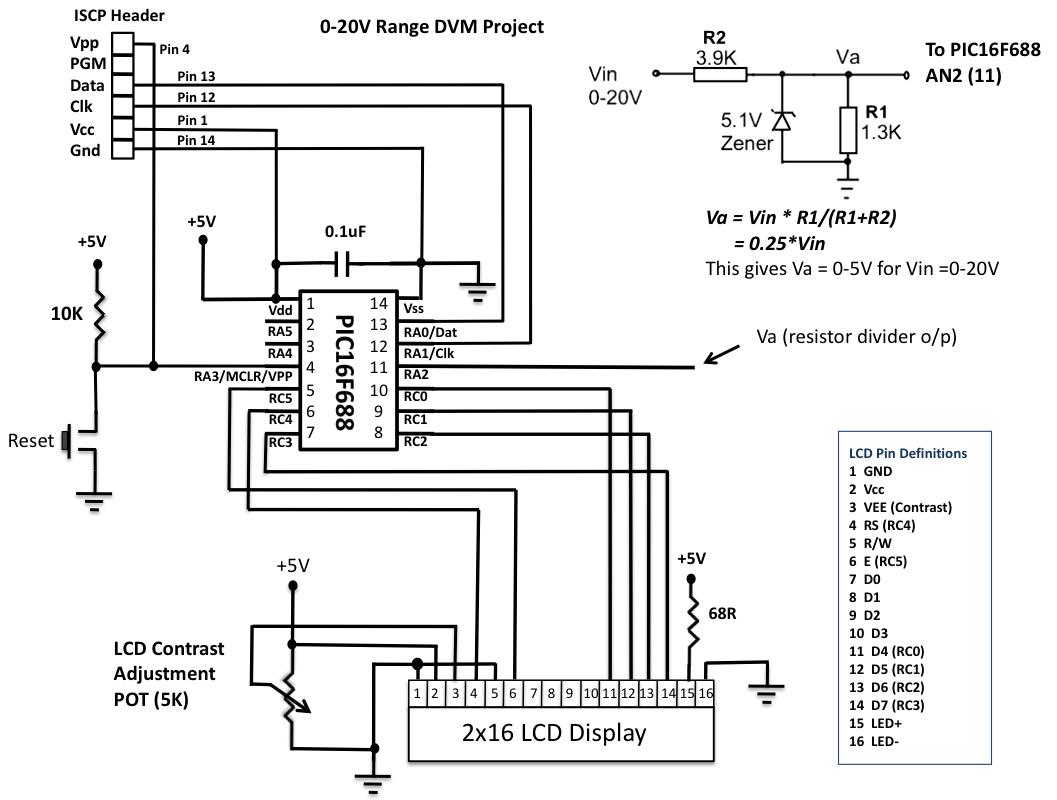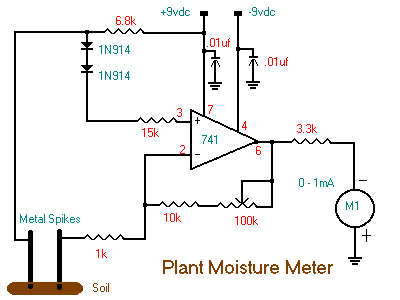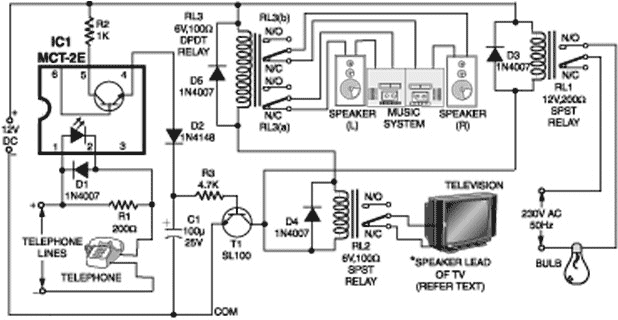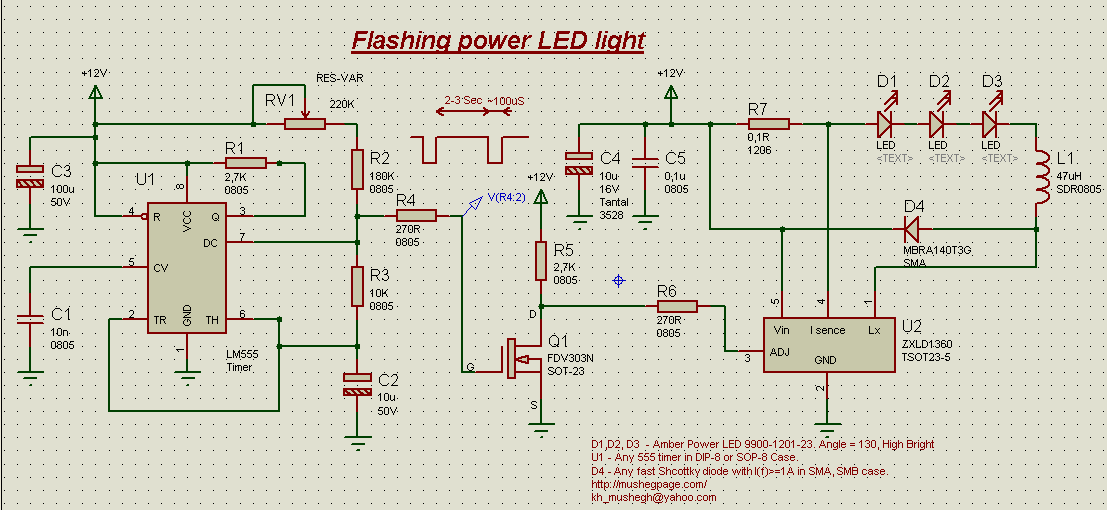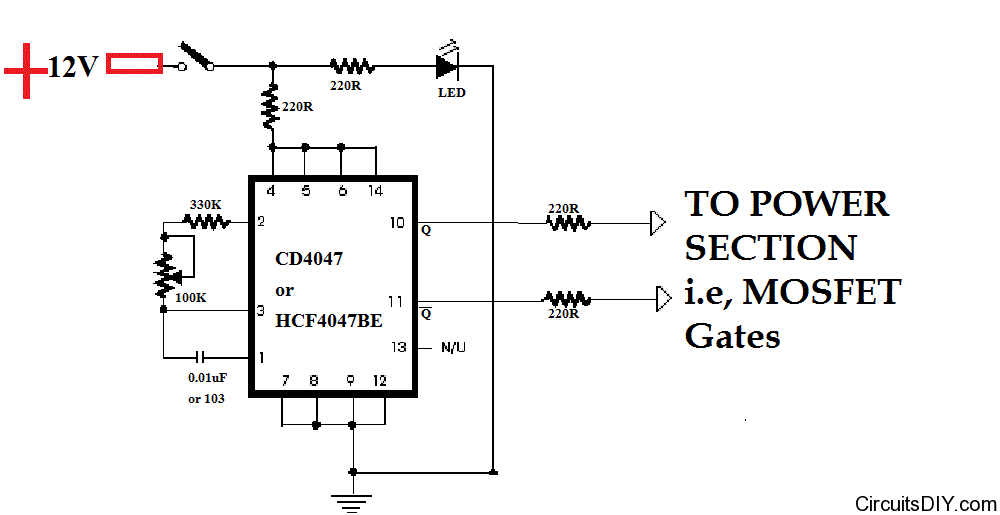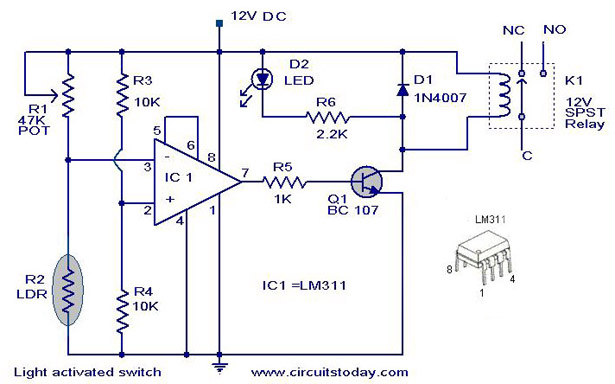
thermometer based on mikrokontroler
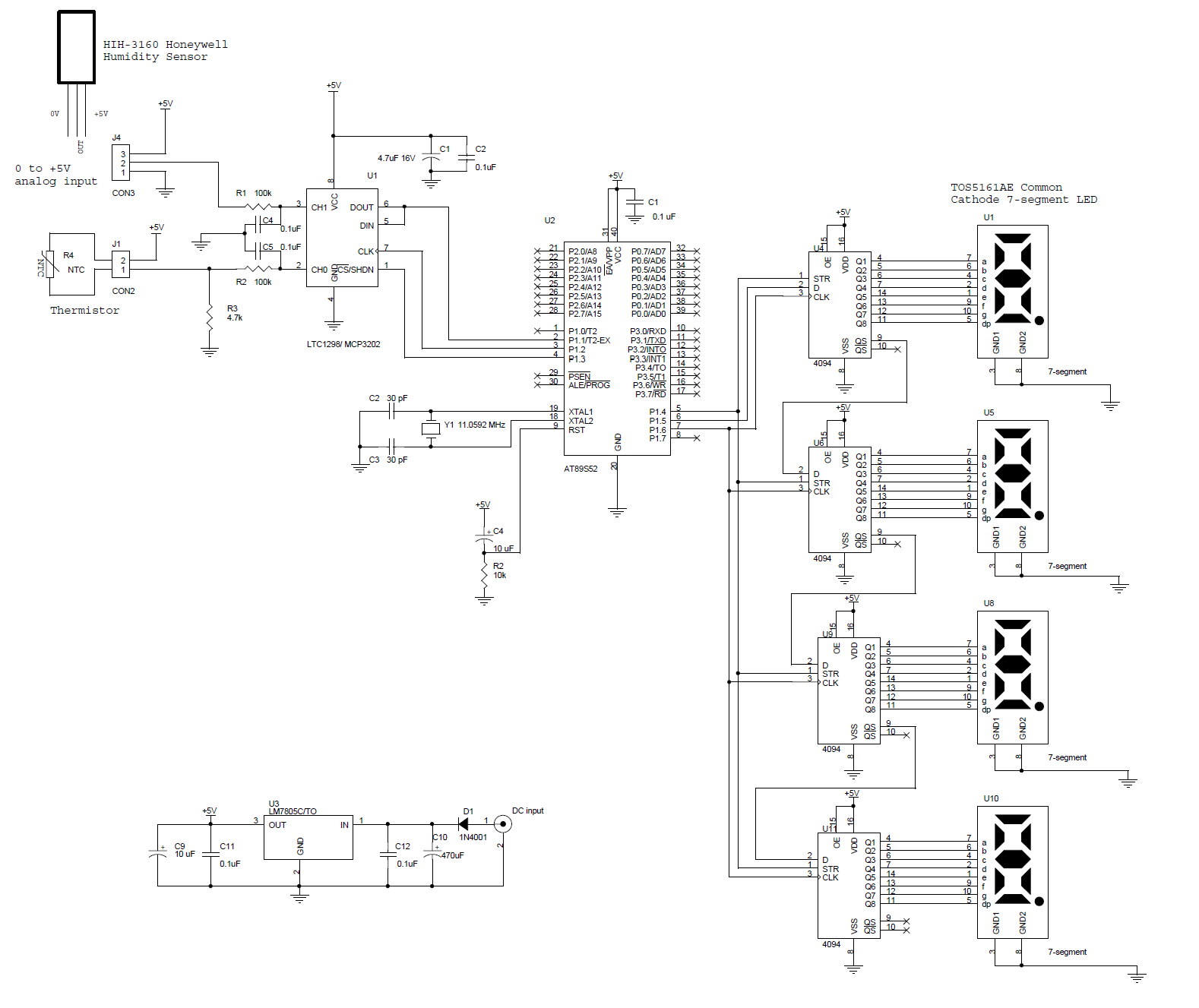
This circuit features a microcontroller AT89S52 thermometer paired with an LTC1298 12-bit ADC. The program is written in C language and incorporates digital filtering along with an interface for an LED display. The temperature readings have a sensitivity of 0.1°C. The hardware block and circuit diagram are illustrated in the accompanying figure. An epoxy thermistor sensor is utilized, and the signal conditioning circuit consists of a simple voltage divider. The ADC, which operates via a 12-bit SPI interface, is the LTC1298. The circuit employs Atmel's Microcontroller 89S52, and the 0.5-inch display consists of four digits made up of 7-segment LEDs. The segment driver provides a 32-bit CMOS output. The 12-bit ADC (either LTC1298 or MC3202) features two channels: CH0 and CH1. The signal from the ADC's input channel 0 is derived from the thermistor voltage divider, while channel 1 is available for other sensors. In the provided example, the HIH-3160 Honeywell Relative Humidity Sensor is used. The ADC chip connects to the MCU 89S52 through pins P1.1, P1.2, and P1.3. The LED display, which has four digits, is directly driven by a CMOS shift register 4094.
The circuit design integrates several key components to achieve accurate temperature and humidity readings. The AT89S52 microcontroller serves as the central processing unit, executing the C language program that manages data acquisition, processing, and display. The LTC1298 ADC is crucial for converting the analog signals from the thermistor and humidity sensor into digital data for the microcontroller to process.
The thermistor, which is a temperature-sensitive resistor, is configured in a voltage divider arrangement to produce a voltage proportional to the temperature. This voltage is then fed into the ADC's channel 0. The LTC1298 ADC features a 12-bit resolution, allowing for precise digital representation of the analog input, which is essential for achieving a sensitivity of 0.1°C in temperature measurements.
Channel 1 of the ADC is reserved for additional sensors, providing flexibility for future expansions or modifications to the system. In this setup, the HIH-3160 sensor is utilized to measure relative humidity, enhancing the functionality of the device beyond simple temperature readings.
The output from the ADC is communicated to the AT89S52 microcontroller via the SPI interface, utilizing pins P1.1, P1.2, and P1.3 for data transfer. This interface allows for efficient and rapid communication between the ADC and the microcontroller, ensuring timely updates to the displayed readings.
The display subsystem consists of a 0.5-inch four-digit 7-segment LED display, which is driven by a CMOS shift register (4094). This configuration allows for compact and efficient control of the display segments, enabling clear visibility of the temperature and humidity readings. The design effectively combines the necessary components to create a reliable and user-friendly thermometer and humidity measurement system.This is a circuit of a microcontroller AT89S52 thermometer and LTC1298 12-bit ADC, programs written in C language program with digital filtering and interface the LED display. Reading provides a sensitivity 0. 1C. The hardware block and circuit diagram is shown in the figure below. The thermistor sensor is epoxy. The signal conditioning circuit is a simple voltage divider. The ADC is 12-bit SPI interface LTC1298 analog to digital. Atmel`s Microcontroller 89S52. The 0. 5 inch display has four digits of 7 segments. The driver of the segment offers 32-bit CMOS output. The 12-bit ADC (LTC1298 or MC3202) are two channels, CH0 and CH1. The signal from ADC input channel 0 thermistor voltage divider is simple. Channel 1 is available for other sensors. The example shown in the diagram is the HIH-3160 Honeywell Relative Humidity Sensor. The ADC chip interconnects with MCU 89S52 with P1. 1, P1. 2 and P1. 3. The LED display has 4 digits. The CMOS shift register 4094 directly drives the LED 🔗 External reference
The circuit design integrates several key components to achieve accurate temperature and humidity readings. The AT89S52 microcontroller serves as the central processing unit, executing the C language program that manages data acquisition, processing, and display. The LTC1298 ADC is crucial for converting the analog signals from the thermistor and humidity sensor into digital data for the microcontroller to process.
The thermistor, which is a temperature-sensitive resistor, is configured in a voltage divider arrangement to produce a voltage proportional to the temperature. This voltage is then fed into the ADC's channel 0. The LTC1298 ADC features a 12-bit resolution, allowing for precise digital representation of the analog input, which is essential for achieving a sensitivity of 0.1°C in temperature measurements.
Channel 1 of the ADC is reserved for additional sensors, providing flexibility for future expansions or modifications to the system. In this setup, the HIH-3160 sensor is utilized to measure relative humidity, enhancing the functionality of the device beyond simple temperature readings.
The output from the ADC is communicated to the AT89S52 microcontroller via the SPI interface, utilizing pins P1.1, P1.2, and P1.3 for data transfer. This interface allows for efficient and rapid communication between the ADC and the microcontroller, ensuring timely updates to the displayed readings.
The display subsystem consists of a 0.5-inch four-digit 7-segment LED display, which is driven by a CMOS shift register (4094). This configuration allows for compact and efficient control of the display segments, enabling clear visibility of the temperature and humidity readings. The design effectively combines the necessary components to create a reliable and user-friendly thermometer and humidity measurement system.This is a circuit of a microcontroller AT89S52 thermometer and LTC1298 12-bit ADC, programs written in C language program with digital filtering and interface the LED display. Reading provides a sensitivity 0. 1C. The hardware block and circuit diagram is shown in the figure below. The thermistor sensor is epoxy. The signal conditioning circuit is a simple voltage divider. The ADC is 12-bit SPI interface LTC1298 analog to digital. Atmel`s Microcontroller 89S52. The 0. 5 inch display has four digits of 7 segments. The driver of the segment offers 32-bit CMOS output. The 12-bit ADC (LTC1298 or MC3202) are two channels, CH0 and CH1. The signal from ADC input channel 0 thermistor voltage divider is simple. Channel 1 is available for other sensors. The example shown in the diagram is the HIH-3160 Honeywell Relative Humidity Sensor. The ADC chip interconnects with MCU 89S52 with P1. 1, P1. 2 and P1. 3. The LED display has 4 digits. The CMOS shift register 4094 directly drives the LED 🔗 External reference
